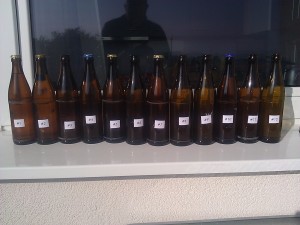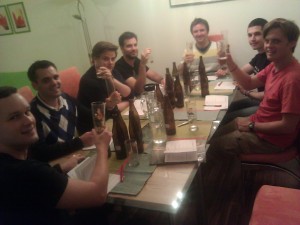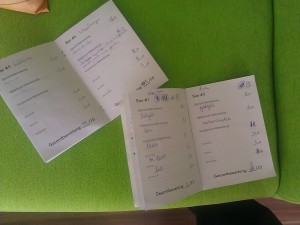It all started with a simple question “Is des Zipfa wirklich so a Foazgeschwoabat?” – “Is Zipfer beer really so bad after all”. Having a scientific background there was just no way around setting up an experiment: 8 experts, 12 different kinds of Austrian beer and a blind taste test. Here are some photos before and after I had removed the beer bottle labels
And here’s the panel of internationally acclaimed beer and microwave engineering experts ;)
I had prepared booklets where they could rate the different kinds of beers (#1-#12) by using points and words. It blew me away how many suitable adjectives they found for describing the smell, looks and taste of beer.
The results were similarly astonishing. I don’t want to bore you with statistics (that’s what we had LibreOffice Calc for), so here just some major findings:
- Zipfer scored the highest number of points from 2/8 testers -> “Zipfer is do koa so a Foazgschwoabat” – Zipfer beer is not so bad after all.
- Only one tester (out of 8!!) successfully identified the non-alcoholic beer Schlossgold
- The logical conclusion: Marketing really seems to have a huge influence on our favorite beer choices – more than the obvious parameters looks, smell and taste.
I don’t know when, but it was so much fun, I am sure I will do something like this again!!!




We also ran a beer tasting, splendid winners were Trumer Pils and Wieselburger. However, Schlossgold wasn’t among the contenders (after all, it was a *beer* tasting), and neither was Zipfer, so the results might not be very comparable…
Do we get the full data in the supplementary information? Also I’d like to know a few more parameters:
Served at what temperature?
In what order?
—
Also:
Why no women among the testers?
At the end of the day, the result regarding “Schloßgold” is nothing less than a sensation, unless it was beer No.GE.10
lg
christoph
Pingback: Update on the 30 Escapes Project | Christian M. Schmid